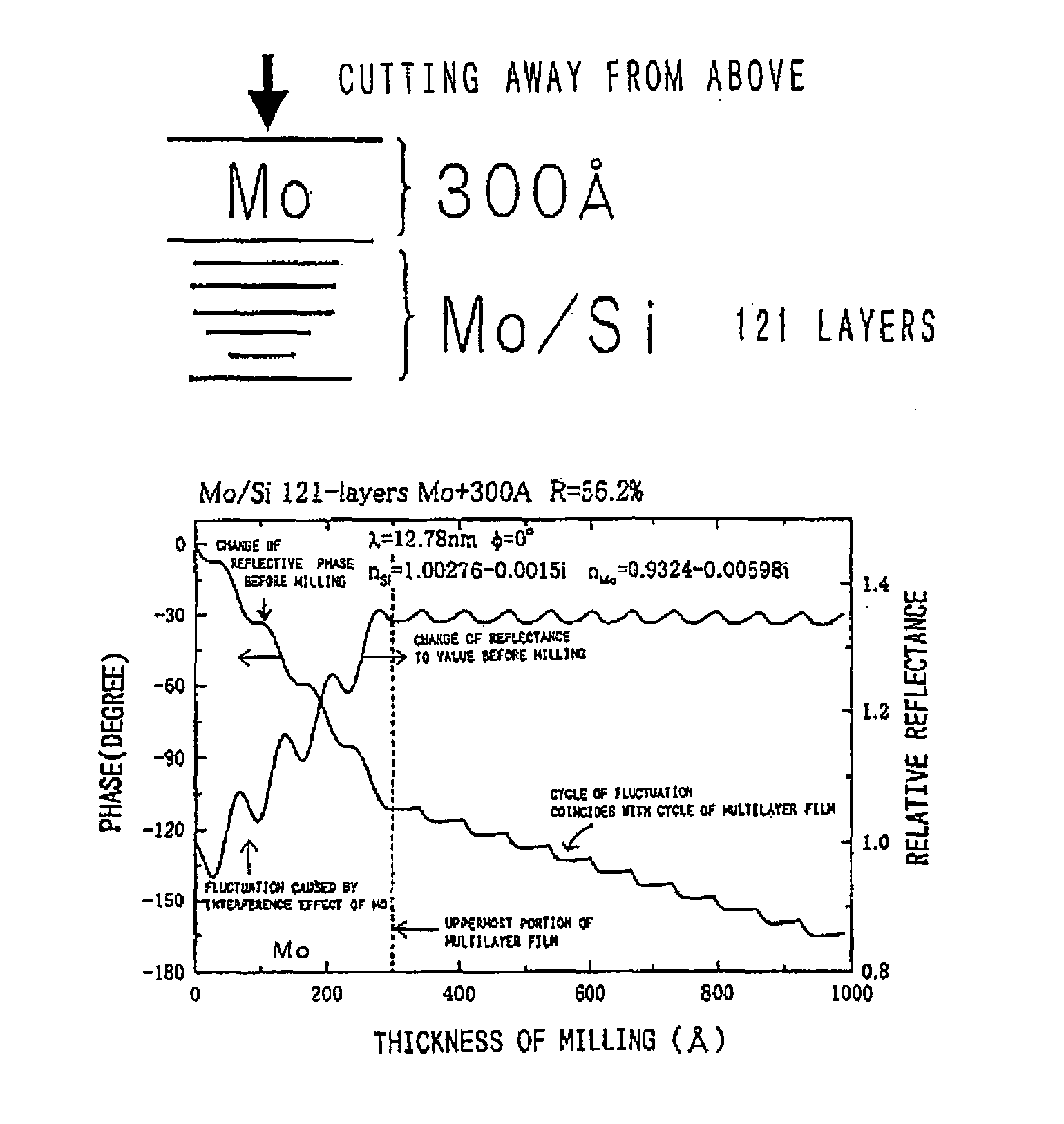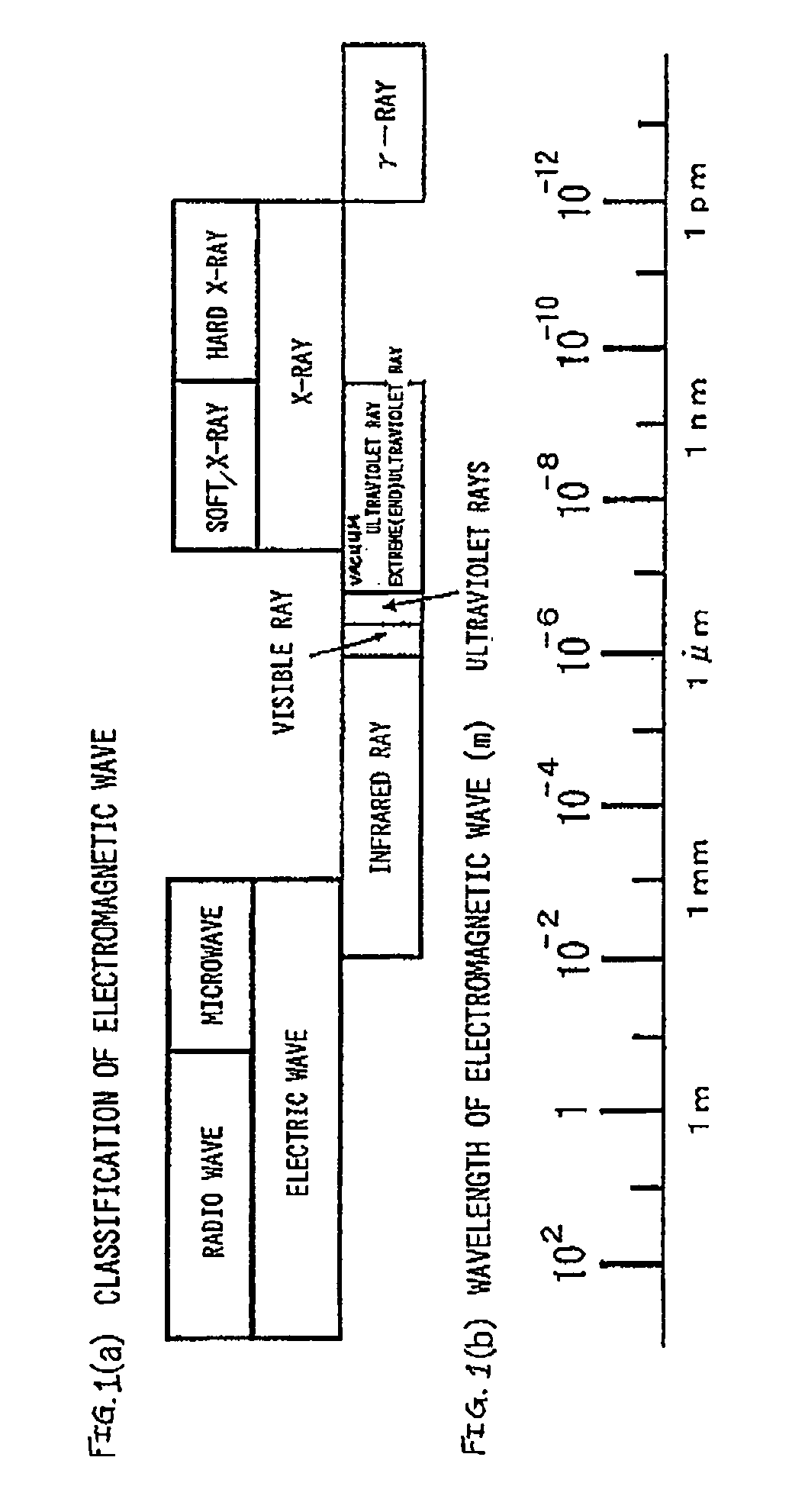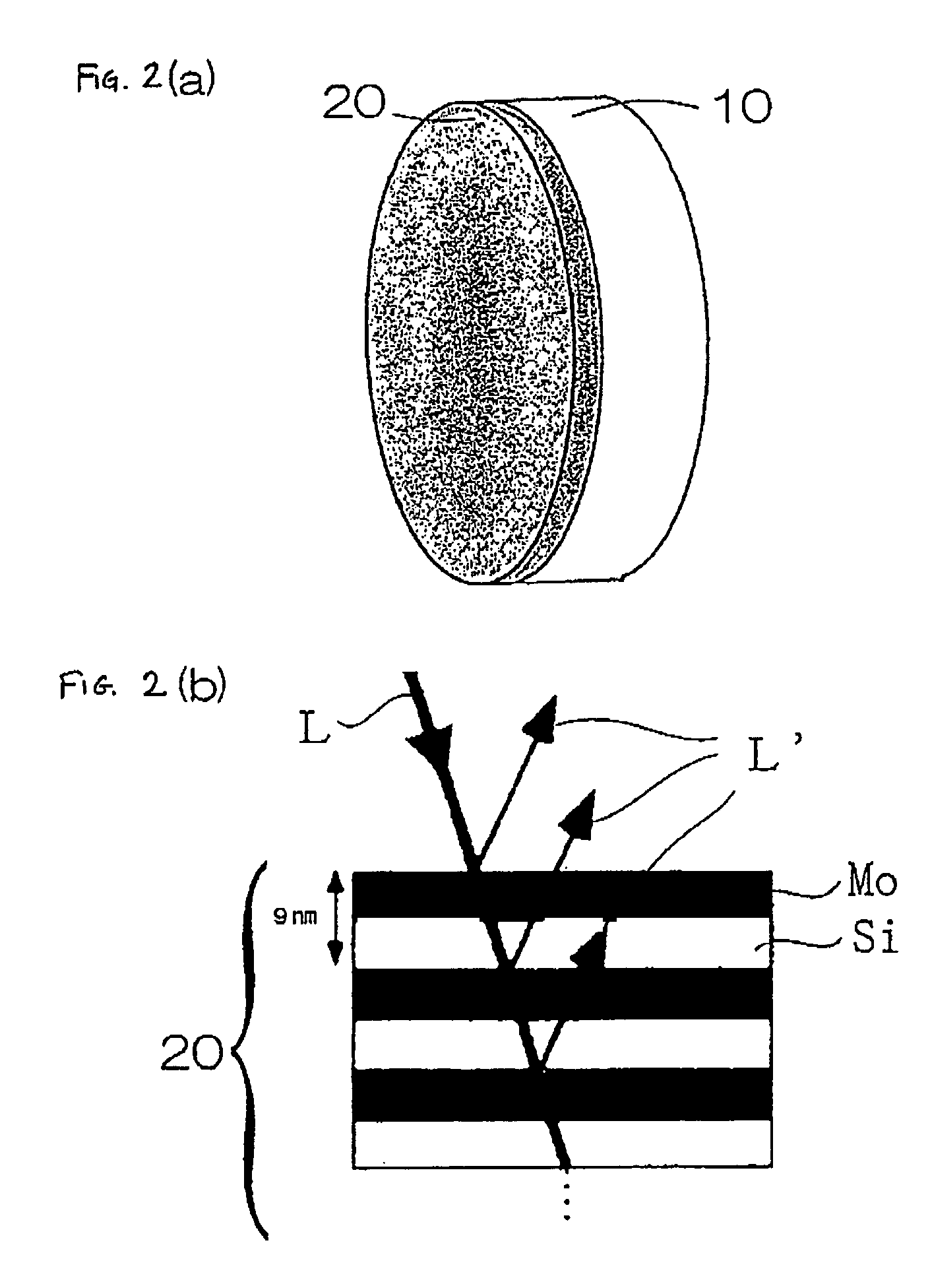Optical element such as multilayer film reflection mirror, production method therefor and device using it
- Summary
- Abstract
- Description
- Claims
- Application Information
AI Technical Summary
Benefits of technology
Problems solved by technology
Method used
Image
Examples
Embodiment Construction
[0029]Embodiments of the present invention will be described below in detail with reference to the drawings.
[0030]FIG. 5 is a graph showing a relationship between the number of cycles as the number of films of a multilayer films (number of repetitions of films constituting the reflective multilayer film, each of the films being composed of a material having a high refractive index and a material composed of a material having a low refractive index) and a reflectance in a reflector using a multilayer film as shown in FIG. 2(a). The films have an optical thickness of one fourth a wavelength, respectively. FIG. 5 shows a relationship between a multilayer film composed of ruthenium (Ru) and silicon (Si), a multilayer film composed of rhodium (Rh) and silicon (Si), a multilayer film composed of molybdenum (Mo) and silicon (Si), a multilayer film composed of ruthenium (Ru) and carbon (C), and a multilayer film composed of rhodium (Rh) and carbon (C) and reflectances.
[0031]As can be seen f...
PUM
 Login to View More
Login to View More Abstract
Description
Claims
Application Information
 Login to View More
Login to View More - R&D
- Intellectual Property
- Life Sciences
- Materials
- Tech Scout
- Unparalleled Data Quality
- Higher Quality Content
- 60% Fewer Hallucinations
Browse by: Latest US Patents, China's latest patents, Technical Efficacy Thesaurus, Application Domain, Technology Topic, Popular Technical Reports.
© 2025 PatSnap. All rights reserved.Legal|Privacy policy|Modern Slavery Act Transparency Statement|Sitemap|About US| Contact US: help@patsnap.com



